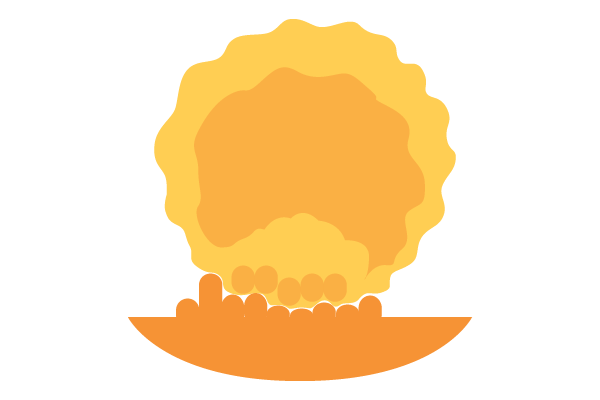
3 weeks pregnant
For information about weeks 1 through 11 of a twin or multiple pregnancy, tap here.
Three is a magic number, and this week there are a lot of changes happening for both you and your baby.
How’s Baby?
You wouldn’t know it yet, but, wow, how your baby has grown! Over the past couple of weeks, your itsy bitsy ball of cells has been undergoing lots of changes, and now has two distinct layers, the epiblast and hypoblast. All of your baby’s organs and body parts will develop from these two layers. The amniotic fluid that’s going to be Baby’s home for the next nine months is already starting to gather too — in fact, at this point, it’s growing even faster than your baby is.
Week number three is an exciting one for yet another reason. Your pregnancy might finally be detectable by some store-bought pregnancy tests, which search for the presence of hCG (human chorionic gonadotropin). This pregnancy hormone is released once the blastocyst is firmly implanted in your uterine wall and increases throughout the first trimester as the bundle of cells continues to multiply.
One more fun fact about your growing little one? They already have a genetically predetermined hair and eye color, and you already know they’ll be cute!
What's new with you?
Although you may not know that you’re pregnant yet, you might be experiencing your first symptoms of early pregnancy this week. Bloating and mood swings are all very common symptoms of pregnancy at this stage. These symptoms are mainly due to an increase in the production of the hormones estrogen and progesterone. Cramping, in addition to possible spotting, is also common. The cramping, especially if it comes with spotting, is probably caused by implantation as your little ball of cells settles into your uterine wall and gets cozy in its home for the next nine months. You also might notice some white vaginal discharge as the walls of your uterus thicken. However, these symptoms can also be easily confused for PMS symptoms.
As mentioned above, this could be the time to take a pregnancy test, as your hCG levels may be significant enough to register a positive result. If it reads negative, that doesn’t necessarily mean you’re not pregnant: it can take up to a week after your expected period to get a positive result.
And if you haven't already, you should start taking prenatal vitamins with a folic acid content of at least 400 mcg/day, which is incredibly important in helping with your little one’s development. Make sure that you’re also getting a healthy amount of key vitamins and minerals in your diet including iron, calcium, vitamin D, and DHA.
Reviewed by the Ovia Health Clinical Team
Read more
Sources
- AK Sfakianaki. "Prenatal vitamins: A review of the literature on benefits and risks of various nutrient supplements." Formulary Journal. ModernMedicine Network. Web. January 31, 2013.
- Mayo Clinic Staff. "First trimester pregnancy: what to expect." Mayo Clinic. Mayo Clinic. February, 26, 2020. Web.
- University of California-Davis Health System. "Women who start prenatal vitamins early are less likely to have children with autism, study finds." ScienceDaily. ScienceDaily. May 25, 2011. Web.




